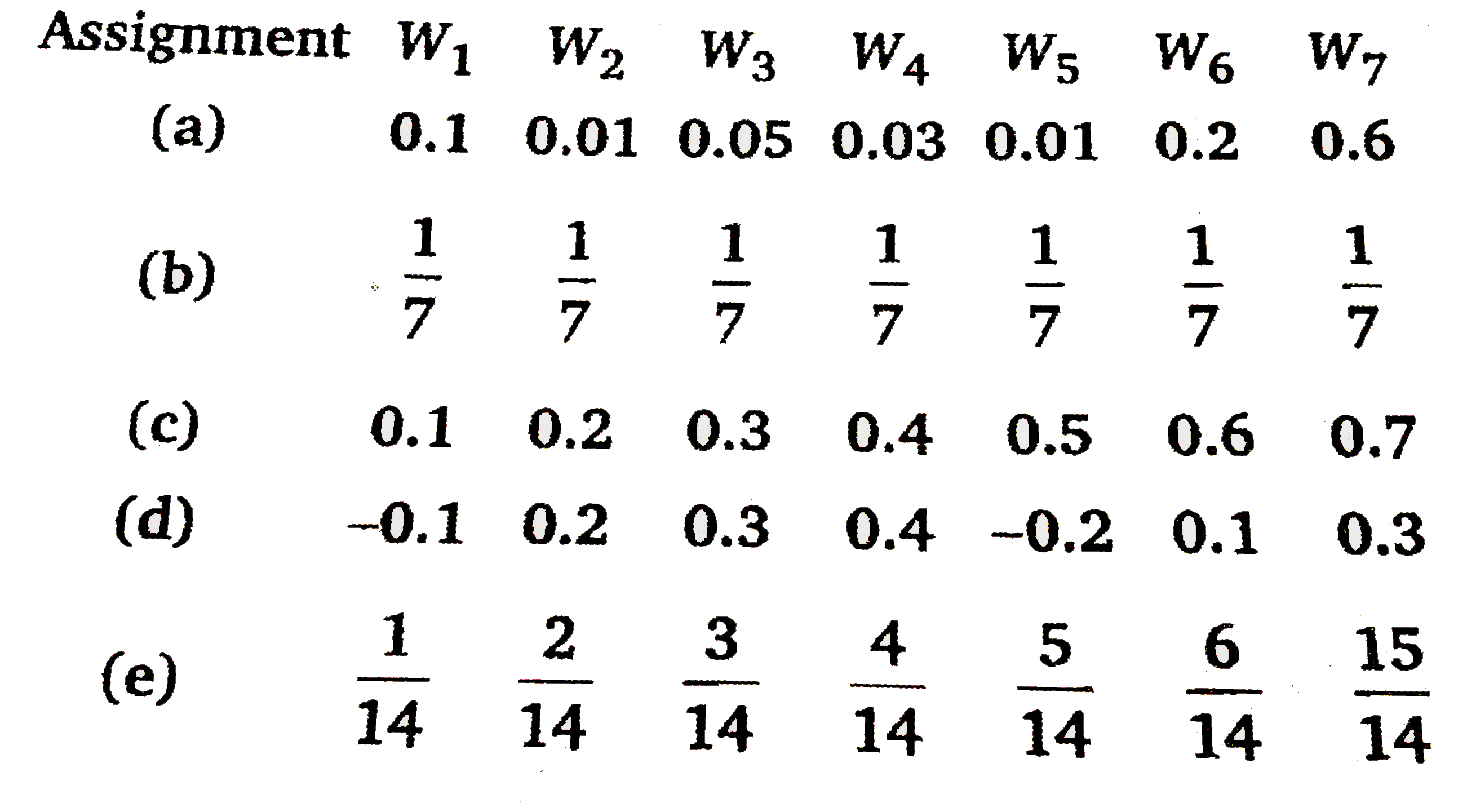A pack of 52 cards is divided at random into two equals parts. Find the probability that both parts will have an equal number of black and red cards.Solution in Bengali
The correct Answer is:{26!}4{13!}4×52!
We have to find the probability that out of 26 cards drawn at random from the pack of cards, 13 will be red and 13 black. The total number of different ways to draw 26 cards from 52 is .52C26. The favorable ways are those in which there will be 13 cards drawn from 26 red cards and 13 from 26 black cards. 13 red cards may be drawn in .26C13 different ways and 13 black cards also in .26C13 different ways. Therefore, total number of favorable ways is equal to .26C13.26C13. And consequently the required probability is
P=.26C13.26C13.52C26
=((26)!(13)!(13)!(26)!(13)!(13)!)((52)!(26)!(26)!)={(26)!}4{(13)!}4(52)!
Topper's Solved these Questions
- PROBABILITY I BOOK - CENGAGE PUBLICATIONCHAPTER - PROBABILITY I EXERCISE - Exercise 9.3
7 Videos
- PROBABILITY I BOOK - CENGAGE PUBLICATIONCHAPTER - PROBABILITY I EXERCISE - MCQ
54 Videos
- PROBABILITY I BOOK - CENGAGE PUBLICATIONCHAPTER - PROBABILITY I EXERCISE - Exercise 9.1
6 Videos
- PROBABILITYBOOK - CENGAGE PUBLICATIONCHAPTER - PROBABILITYEXERCISE - All Questions
470 Videos
- PROBABILITY IIBOOK - CENGAGE PUBLICATIONCHAPTER - PROBABILITY IIEXERCISE - MULTIPLE CORRECT ANSWER TYPE
6 Videos
Similar Questions
AandB are two candidates seeking admission in IIT. The probability that A is selected is 0.5 and the probability that AandB are selected is at most 0.3. Is it possible that the probability of B getting selected is 0.9?
View SolutionA sample space consists of 3 sample points with associated probabilities given as 2p,p2,4p−1. Then the value of p is p= a.√11−3 b. √10−3 c. 14<p<12 d.none
View SolutionWhich of the following cannot be valid assignment of probabilities for outcomes of sample space S={W1,W2,W3,W4,W5,W6,W7}

View SolutionA coin is tossed three times, consider the following events. A : ‘No head appears’, B: ‘Exactly one head appears’ and C: ‘Atleast two appear’. Do they form a set of mutually exclusive and exhaustive events?
View SolutionLet EandF be two independent events. The probability that exactly one of them occurs is 1125 and the probability if none of them occurring is 225. If P(T) denotes the probability of occurrence of the event T, then (a) P(E)=45,P(F)=35 (b) P(E)=15,P(F)=25 (c) P(E)=25,P(F)=15 (d) P(E)=35,P(F)=45
View SolutionTwo cards are drawn at random and without replacement from a pack of 52 playing cards. Find the probability that both the cards are black.
View SolutionA pack of 52 cards is divided at random into two equals parts. Find the probability that both parts will have an equal number of black and red cards.
View SolutionTwo cards are drawn at random and without replacement from a pack of 52 playing cards. Find the probability that both the cards are black.
View SolutionTwo cards drawn at random and without replacement from a pack of 52 playing cards. Find the probability that both the cards are black .
View SolutionWhat percent of a day is 3 hours?
View SolutionTwo cards are drawn at random and without replacement from a pack of 52 playing cards. Find the probability that both the cards are black.
View SolutionIf two cards are drawn from pack 52 cards at random, then find the probability of getting both red or both kings.
View SolutionA pack of 52 cards is divided at random into two equals parts. Find the probability that both parts will have an equal number of black and red cards.
View SolutionFrom an ordinary pack of 52 cards an even number of cards are drawn at random. Find the probability of getting equal number of black and red cards.
View SolutionTwo cards are drawn at random . Without replacement from a pack of 52 playing cards. Find the probability that both the cards are black.
View SolutionTwo cards are drawn at random from a pack of 52 cards. What is the probalbility that either both are black or both are jacks ?
View Solution
